Are You Ruining Ghee's Benefits? Cooking Mistakes to Know
Vaibhav Kochar | Jul 19, 2025, 11:30 IST
( Image credit : Freepik )
Ghee is an integral part of Indian cooking. However, many people misuse it unknowingly. Overheating destroys its nutrients. Adding it at the wrong time affects the dish. Using it with incompatible foods disturbs digestion. Reusing it for frying makes it toxic. Portion control and proper storage are also important. Knowing the source of ghee ensures quality and supports local farmers.
There’s something sacred about the smell of hot ghee in an Indian kitchen. It feels like home, like comfort, like a big warm hug from your mom. Ghee isn’t just a fat here – it’s an emotion. It’s what gives our dals that richness, our parathas that crispness, and our halwas that soul. But what if I told you that most of us are using it wrong?
Yes, even our moms and grandmothers sometimes do things with ghee that aren't exactly healthy or effective. And in a time where food is fast, life is stressful, and our immunity is constantly under attack, understanding the right way to use ghee isn’t just useful, it’s necessary.
Let’s look at the common mistakes you might be making while cooking with ghee and what you can do instead to truly respect this golden gem.
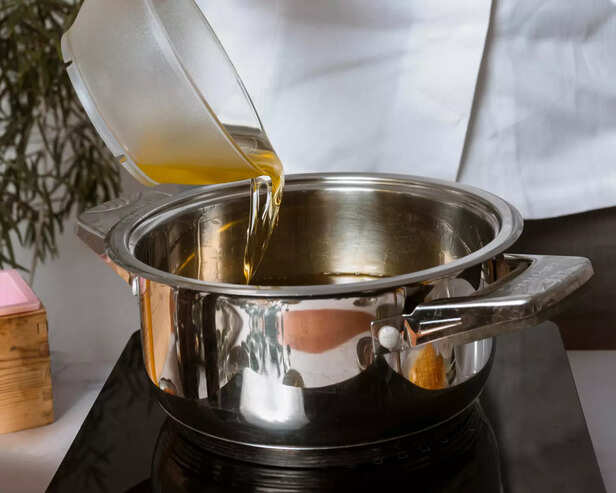
Ghee has a high smoke point (around 250°C), which means it’s more stable than most oils when heated. But even ghee can be overheated.
Many people think, “Ghee toh sab kuch jhel lega,” and they end up burning it. That slightly burnt smell? That’s a sign of lost nutrients and the start of harmful compounds.
What happens when you burn ghee?
Cook on medium flame and add ghee after your pan is slightly hot, not burning. For tadka (tempering), use less heat and remove it as soon as the mustard or jeera crackles.
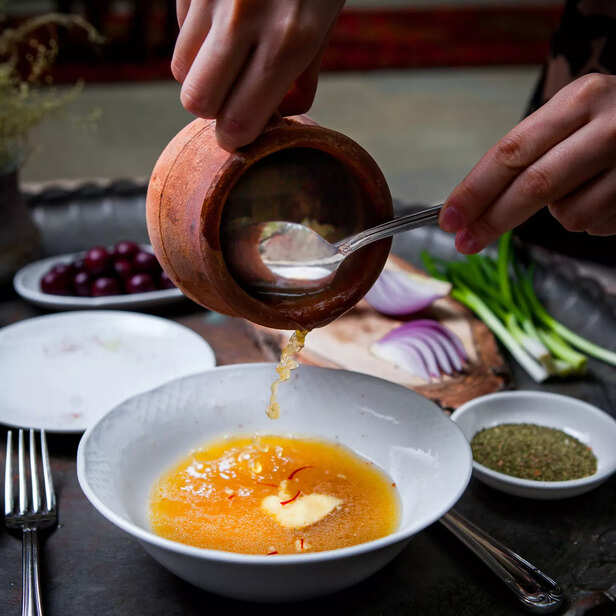
Timing is everything, not just in life, but also in cooking.
Mistake people make: Dumping ghee in at the start for curries or adding it after the dish is already done.
But ghee behaves differently depending on when it is added. Too early? It evaporates. Too late? It just floats around like an oily topping.
Best practice:
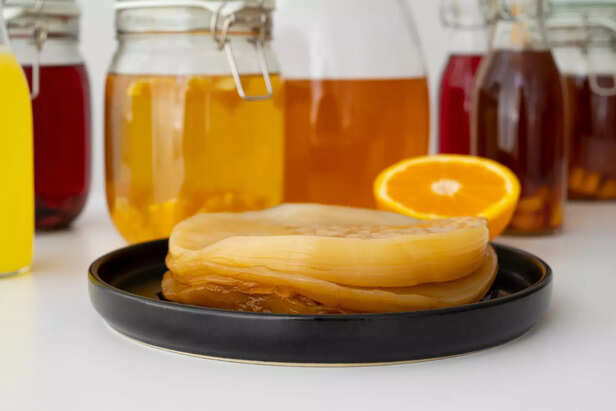
Ghee is versatile, but it’s not for everything.
Some people use ghee in pasta, Chinese stir-fry, or on toast like butter. It’s fine to experiment, but ghee isn’t a universal replacement.
Why this matters:
4. Reusing Ghee for Frying – A Silent Health Trap
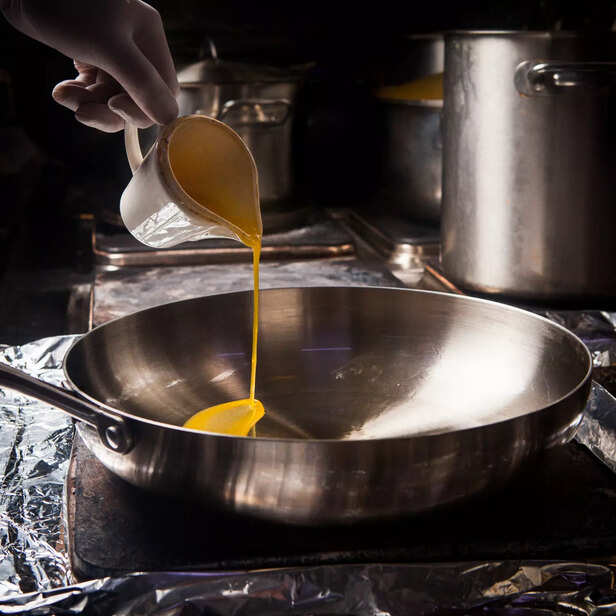
Yes, ghee is expensive. But that doesn’t mean we should reuse it again and again like frying oil.
Reheating ghee multiple times makes it toxic. It changes its molecular structure, and those rich golden drops become harmful.
Signs your ghee has gone bad after reuse:
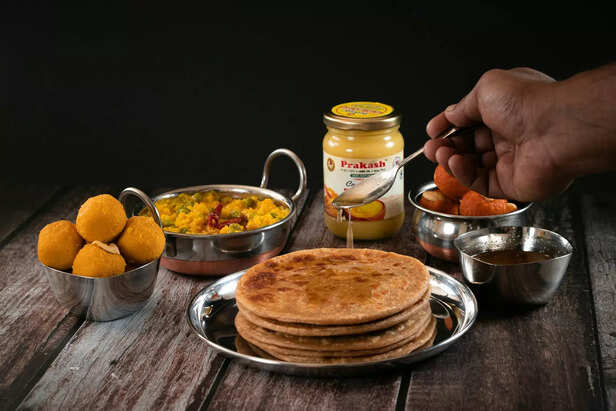
“Arey beta, aur thoda ghee daal!” is sweet until it turns into cholesterol.
Ghee is good fat, sure. But it’s still fat. Overeating can cause:
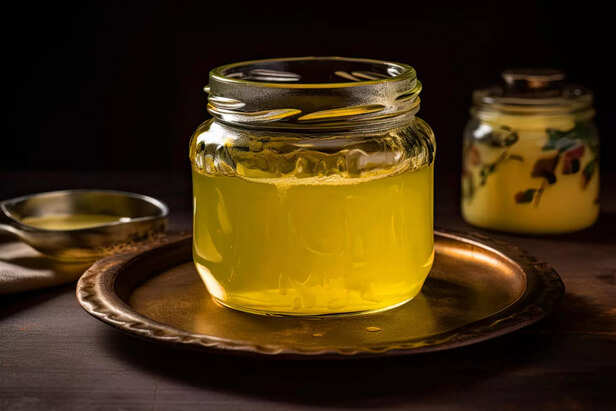
We often keep our ghee near the gas stove, lid half-open, sometimes even using a wet spoon.
Big mistake.
Moisture, air, and heat are enemies of ghee. It may not go “bad” like milk, but its quality drops without you realizing it.
The right way to store:
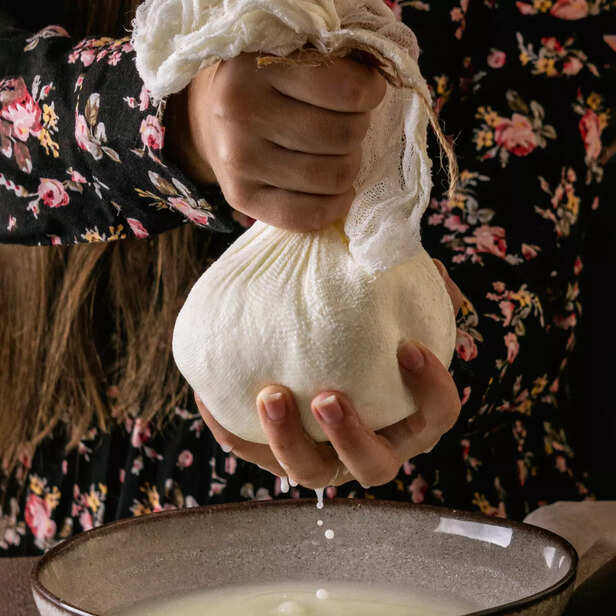
This is the most emotional and political mistake of all, not caring about the source.
In our rush, we often buy supermarket ghee that looks perfect but is made from milk powder or vegetable oil blends. That’s not real ghee. That’s a lie in a bottle.
Why the source matters:
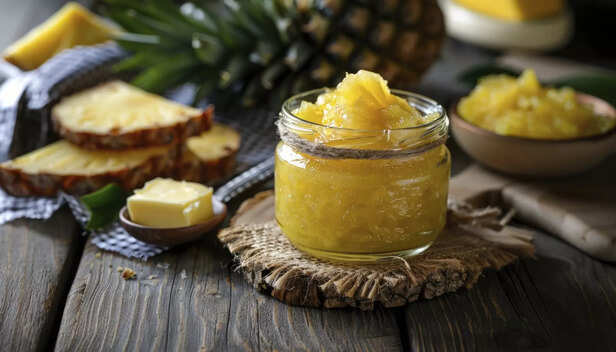
Ghee has fed generations in temples, homes, and ayurvedic medicines. It is not just oil. It is identity. From rituals to recipes, it has silently supported our health and heritage.
But now, with overuse, misuse, and ignorance, we are disrespecting something that always respected us.
So next time you make dal, or paratha, or halwa, pause. Smell the ghee. Use it with love, not laziness. With knowledge, not guesswork.
Because cooking with ghee isn't just about taste, it’s about intention.
Explore the latest trends and tips in Health & Fitness, Travel, Life Hacks, Fashion & Beauty, and Relationships at Times Life!
Yes, even our moms and grandmothers sometimes do things with ghee that aren't exactly healthy or effective. And in a time where food is fast, life is stressful, and our immunity is constantly under attack, understanding the right way to use ghee isn’t just useful, it’s necessary.
Let’s look at the common mistakes you might be making while cooking with ghee and what you can do instead to truly respect this golden gem.
1. Overheating Ghee – Killing Its Goodness

Heating ghee
( Image credit : Freepik )
Ghee has a high smoke point (around 250°C), which means it’s more stable than most oils when heated. But even ghee can be overheated.
Many people think, “Ghee toh sab kuch jhel lega,” and they end up burning it. That slightly burnt smell? That’s a sign of lost nutrients and the start of harmful compounds.
What happens when you burn ghee?
- It loses antioxidants and vitamins like A, D, E, and K.
- It can produce free radicals, the stuff that ages your cells and messes with your gut.
- And let’s be real, burnt ghee doesn’t taste nice.
Cook on medium flame and add ghee after your pan is slightly hot, not burning. For tadka (tempering), use less heat and remove it as soon as the mustard or jeera crackles.
2. Adding Ghee Too Early or Too Late in Recipes

Adding ghee in dishes
( Image credit : Times Life Bureau )
Timing is everything, not just in life, but also in cooking.
Mistake people make: Dumping ghee in at the start for curries or adding it after the dish is already done.
But ghee behaves differently depending on when it is added. Too early? It evaporates. Too late? It just floats around like an oily topping.
Best practice:
- For dry veggies, sauté spices in ghee first.
- For dals or khichdi, drizzle ghee at the end when hot but not boiling.
- For rotis or parathas, apply ghee right after they’re off the tawa to lock in softness.
3. Using Ghee with the Wrong Type of Food

Not to use ghee everywhere
( Image credit : Freepik )
Ghee is versatile, but it’s not for everything.
Some people use ghee in pasta, Chinese stir-fry, or on toast like butter. It’s fine to experiment, but ghee isn’t a universal replacement.
Why this matters:
- Ghee is rich and heavy. Using it with already-rich or incompatible foods (like processed cheese or mayo) can disturb digestion.
- Ayurveda says ghee should balance, not overload.
- Using ghee in creamy sauces that already have butter or cream.
- Mixing ghee and honey in equal quantities (Ayurvedically toxic).
- Adding ghee to junk food and calling it healthy.
4. Reusing Ghee for Frying – A Silent Health Trap

Frying ghee
( Image credit : Freepik )
Yes, ghee is expensive. But that doesn’t mean we should reuse it again and again like frying oil.
Reheating ghee multiple times makes it toxic. It changes its molecular structure, and those rich golden drops become harmful.
Signs your ghee has gone bad after reuse:
- Darker color
- Unpleasant, bitter, or burnt smell
- Sticky or foamy texture on the surface
- If you’re deep frying in ghee, don’t reuse it more than once.
- Instead of deep frying, use ghee for shallow roasting or slow cooking.
5. Ignoring Portion Size – Thinking "More Ghee = More Health"

Ghee = Body requirement
( Image credit : Unsplash )
“Arey beta, aur thoda ghee daal!” is sweet until it turns into cholesterol.
Ghee is good fat, sure. But it’s still fat. Overeating can cause:
- Weight gain
- Acidity
- Indigestion in people with slower metabolism
- 1–2 teaspoons per meal is enough.
- Listen to your body if you feel sluggish or bloated, cut back.
6. Storing Ghee Wrong – Making It Go Rancid

Ghee storage
( Image credit : Freepik )
We often keep our ghee near the gas stove, lid half-open, sometimes even using a wet spoon.
Big mistake.
Moisture, air, and heat are enemies of ghee. It may not go “bad” like milk, but its quality drops without you realizing it.
The right way to store:
- Always use a dry spoon
- Keep it in a steel or glass container
- Store in a cool, dark cabinet (not next to the stove!)
7. Not Knowing Where Your Ghee Comes From

Ghee in the making
( Image credit : Freepik )
This is the most emotional and political mistake of all, not caring about the source.
In our rush, we often buy supermarket ghee that looks perfect but is made from milk powder or vegetable oil blends. That’s not real ghee. That’s a lie in a bottle.
Why the source matters:
- Desi cow ghee (from A2 milk) has healing properties
- Local, hand-churned ghee supports rural farmers
- Mass-produced ghee might include chemicals, preservatives, or even animal fat
- Check labels for “A2 Ghee” or “Bilona churned”
- Buy from trusted local dairies if possible
- Support small-scale ghee makers instead of multinational brands
Ghee Is Not Just Food. It’s Culture

Ghee is love
( Image credit : Freepik )
Ghee has fed generations in temples, homes, and ayurvedic medicines. It is not just oil. It is identity. From rituals to recipes, it has silently supported our health and heritage.
But now, with overuse, misuse, and ignorance, we are disrespecting something that always respected us.
So next time you make dal, or paratha, or halwa, pause. Smell the ghee. Use it with love, not laziness. With knowledge, not guesswork.
Because cooking with ghee isn't just about taste, it’s about intention.
Explore the latest trends and tips in Health & Fitness, Travel, Life Hacks, Fashion & Beauty, and Relationships at Times Life!
Frequently Asked Questions (FAQS)
- Can mixing ghee with olive oil or butter reduce its benefits?Yes, combining ghee with other fats can disrupt its natural digestion benefits.
- Does using ghee in microwave cooking damage its nutrients?Frequent microwaving can slightly reduce ghee’s healing and antioxidant properties.
- Is flavored or infused ghee as healthy as plain ghee?Most flavored ghee lose purity and may contain synthetic additives.
- Should people with lactose intolerance be cautious with ghee?Pure ghee is usually lactose-free, but always check for adulteration.
